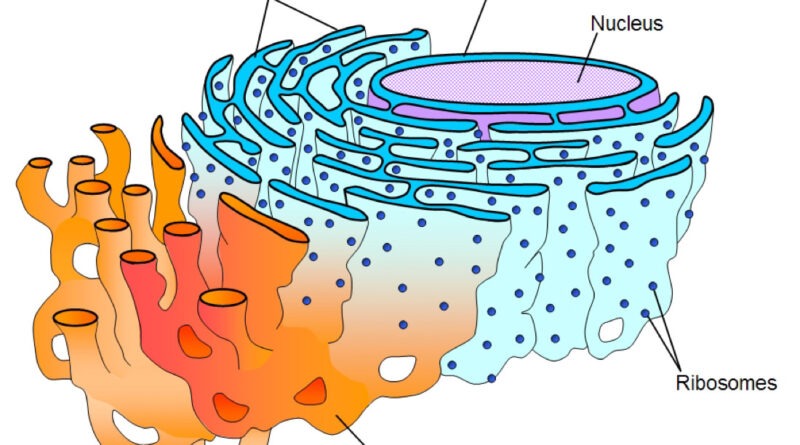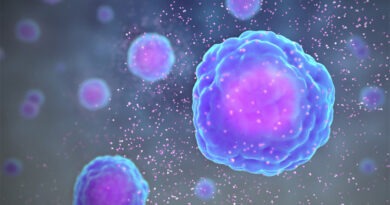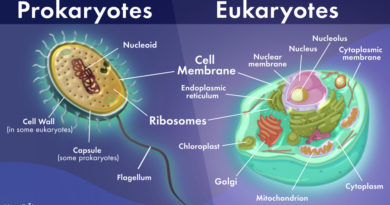The Endoplasmic Reticulum in Eukaryotic Cells: Structure, Function, and Importance
The endoplasmic reticulum (ER) is a crucial organelle within eukaryotic cells, playing a key role in the synthesis, folding, modification, and transport of proteins and lipids. Discovered in the mid-20th century, the ER is an extensive network of membranes that stretches throughout the cytoplasm, forming interconnected tubules and flattened sacs. This complex structure can be divided into two distinct regions: the rough endoplasmic reticulum (RER) and the smooth endoplasmic reticulum (SER), each with unique functions that are essential to cellular physiology.
Structure of the Endoplasmic Reticulum
The ER is composed of a continuous membrane system that forms a single, highly convoluted space called the lumen or cisternal space. The membrane of the ER is similar in composition to the plasma membrane, consisting of a lipid bilayer embedded with proteins. This membrane provides the structural foundation for the various functions of the ER.
Rough Endoplasmic Reticulum (RER): The RER is studded with ribosomes on its cytoplasmic surface, giving it a characteristic “rough” appearance under the microscope. These ribosomes are sites of protein synthesis, where translation of mRNA into polypeptide chains occurs. The presence of ribosomes is indicative of the RER’s primary role in synthesizing and processing proteins destined for secretion, incorporation into the cell membrane, or use within lysosomes.
Smooth Endoplasmic Reticulum (SER): In contrast, the SER lacks ribosomes and has a smoother appearance. It is primarily involved in the synthesis of lipids, metabolism of carbohydrates, and detoxification of drugs and poisons. The SER also regulates calcium ion concentration within cells, which is vital for muscle contraction and other cellular processes.
Functions of the Endoplasmic Reticulum
1. Protein Synthesis and Processing:
The RER plays a pivotal role in the synthesis of membrane-bound and secretory proteins. Newly synthesized polypeptides enter the ER lumen, where they undergo folding and post-translational modifications, such as glycosylation. Properly folded proteins are then packaged into vesicles for transport to the Golgi apparatus, while misfolded proteins are targeted for degradation.
2. Lipid Synthesis and Metabolism:
The SER is involved in the production of lipids, including phospholipids and cholesterol, which are essential components of cellular membranes. The SER also participates in the metabolism of carbohydrates and the detoxification of various substances through enzymatic processes.
3. Calcium Storage and Release:
The SER serves as a reservoir for calcium ions, which are released into the cytosol in response to specific signals. This release is crucial for various cellular activities, including muscle contraction, secretion of hormones, and signal transduction pathways.
4. Detoxification:
Enzymes in the SER help detoxify harmful metabolic byproducts and xenobiotics, such as drugs and alcohol, making the SER particularly abundant in liver cells.
Importance of the Endoplasmic Reticulum
The ER is indispensable for maintaining cellular homeostasis and facilitating the complex network of biochemical reactions required for cell survival. Its ability to produce, modify, and transport essential biomolecules makes it a central hub in the cellular factory.
Disruptions in ER function can lead to various diseases, collectively referred to as ER stress-related disorders. These include neurodegenerative diseases such as Alzheimer’s and Parkinson’s, diabetes, and certain types of cancer. The ER stress response, or unfolded protein response (UPR), is a cellular mechanism aimed at restoring ER function but can lead to cell death if the stress is prolonged or severe.
In summary, the endoplasmic reticulum is a multifunctional organelle critical for protein and lipid synthesis, calcium storage, and detoxification. Its proper function is vital for the health and operation of eukaryotic cells, underscoring its importance in both normal cellular physiology and in the pathogenesis of various diseases. Understanding the ER’s structure and functions provides valuable insights into its roles in health and disease, highlighting the complexity and efficiency of cellular life.



